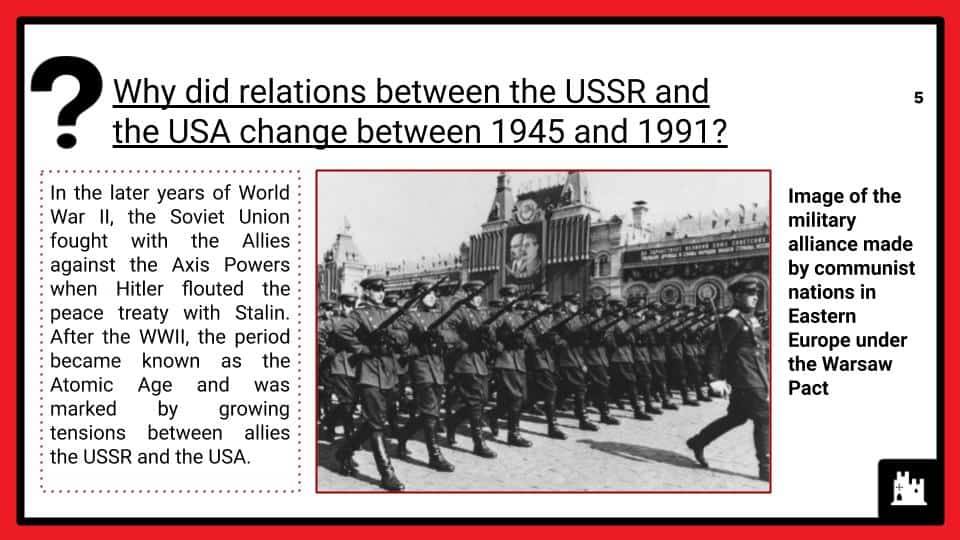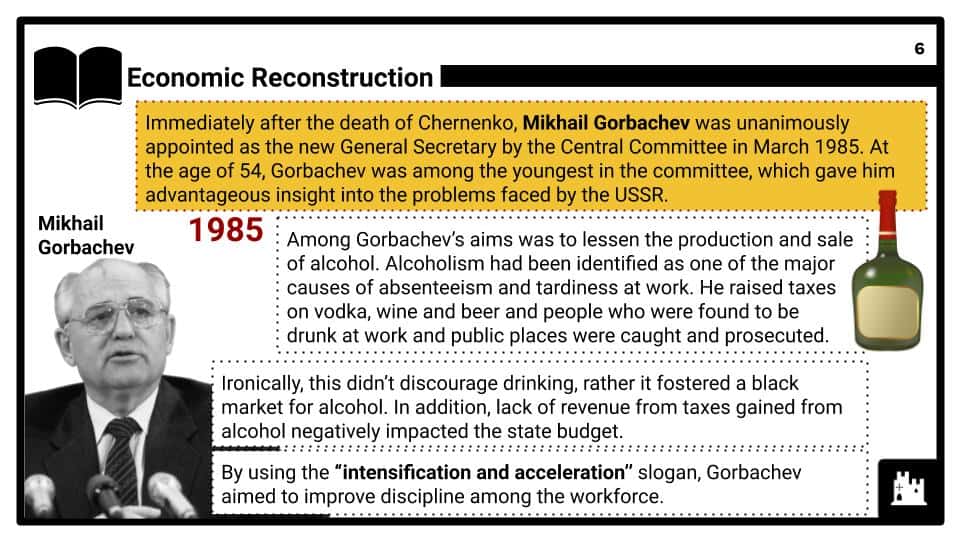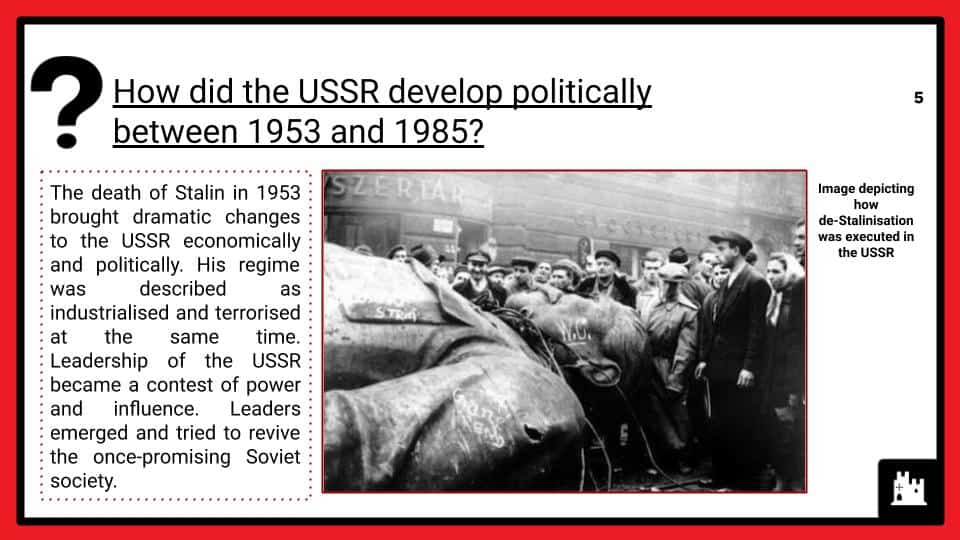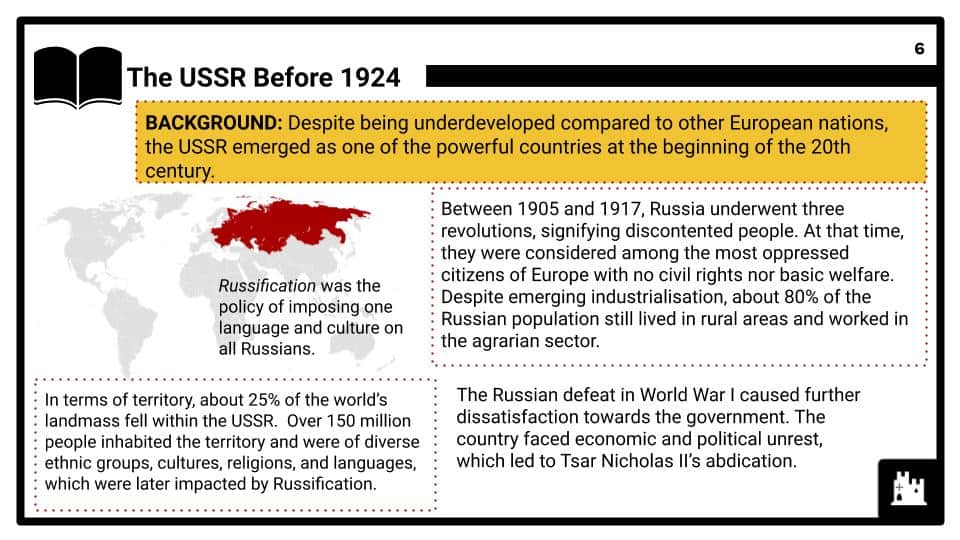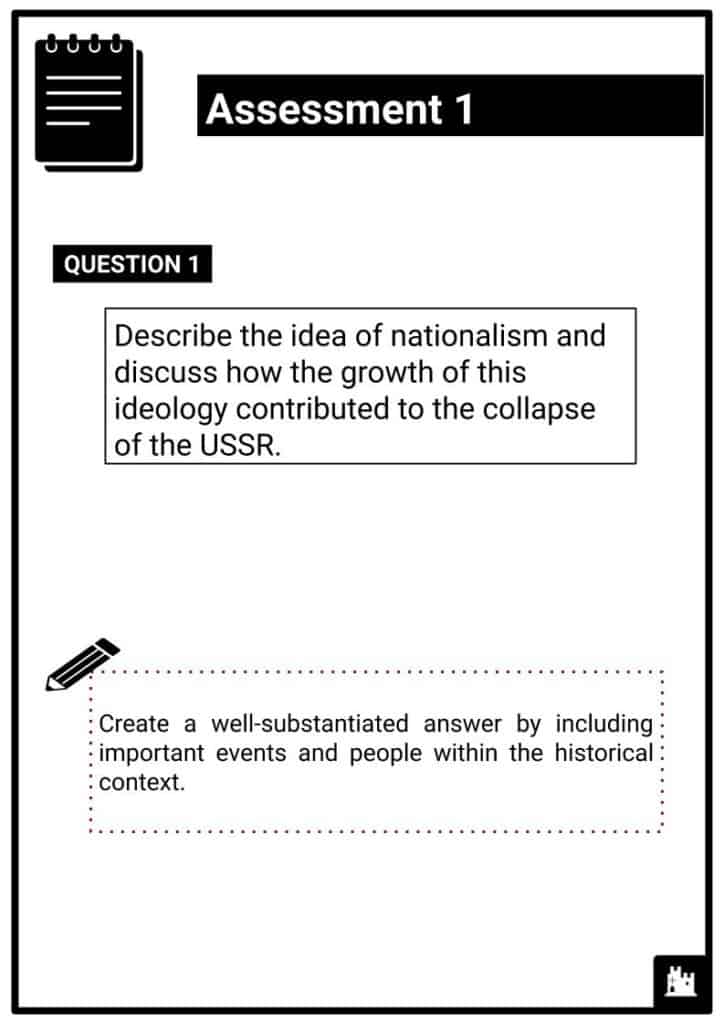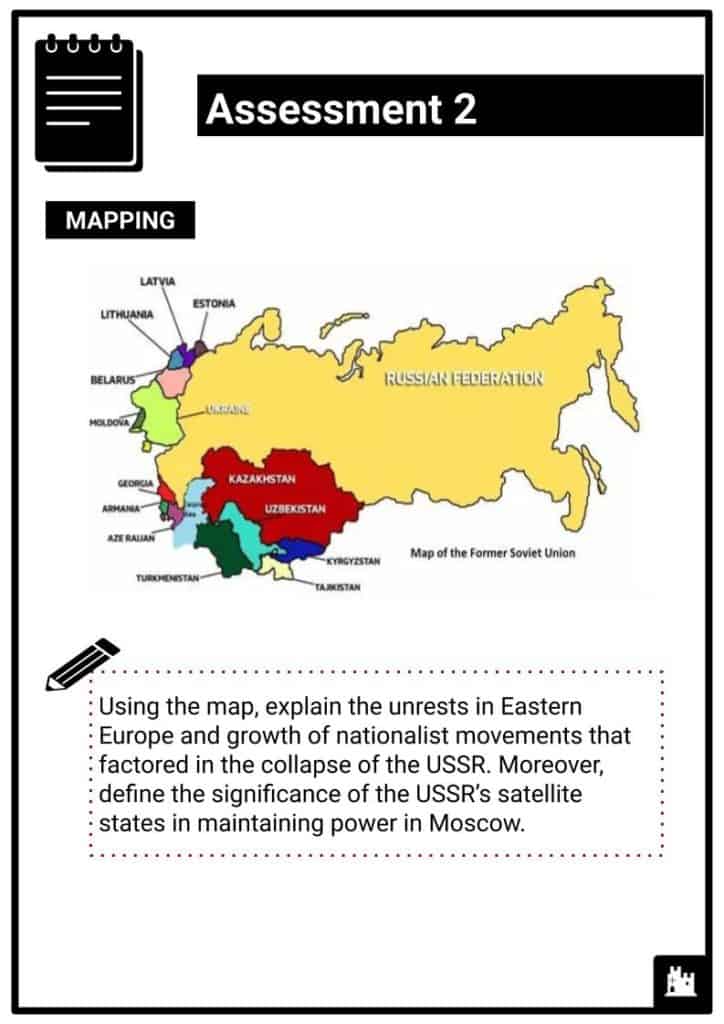Teach any Eduqas module 2C: The Development of the USSR, 1924-1991, no prep needed!
Do you want to save dozens of hours in time? Get your evenings and weekends back? Be fully prepared to teach any Eduqas GCSE topic 2C?
Every Eduqas topic 2C is covered, and each module comes complete with:
Curriculum for 2C. The Development of the USSR, 1924-1991
- This option focuses in depth on the social, political and economic changes experienced by the USSR after the fall of tsarist Russia, the rise of the USSR, through WWII and its aftermath, into the Cold War and finally the collapse of the Soviet Union and Communism. Through the selected themes, students will be able to discuss the developments, events and personalities who shaped the USSR and how they impacted life in the Soviet Union and around the world.
- Themes span major topics such as the circumstances that allowed for Stalin’s rise to power, consolidation of power and implementation of the Cult of Stalin; how life changed for men, women and kulaks (peasants) with the implementation of de-kulakization and the drive for industrialisation; how the USSR was affected by WWII including its initial alliance with Nazi Germany before threats of invasion forced an alliance with the Allied forces; how relations with the West and America in particular deteriorated in the aftermath of WWII and the onset of the Cold War; policy changes between the 50s and 80s that resulted in economic and political stagnation; the rise to power of Gorbachev and his reconstruction policies of perestroika and glasnost, and how he improved relations with the US and world at large; and finally political and economic factors including growing nationalism in Soviet satellite states led to the collapse of the Soviet Union and communism.
- Candidates should be able to map and discuss the circumstances that led to the USSR’s economic, political and social changes and critically analyse the policies implemented by Stalin, Khrushchev, Brezhnev and Gorbachev to stabilise and stimulate the economy and improve the living conditions of the Soviet people.
- Candidates will be required to compare and contrast the years between 1924 and 1991 noting the significant changes, tensions, success and failures.
- Candidates should be able to identify and discuss the impact of shifting from an agrarian to an industrialised economy, Russification, de-Stalinzation and de-kulakization.
- Candidates should understand the changing diplomatic landscape in terms of relationships and leadership such as the Big Three, and the impact of treaties such as NATO, the Warsaw Pact and SALT.
- Students should be able to form well-reasoned judgements based on historical facts, while also including issues of the wider historical debate of how and why the USSR changed in the way it did over the course of the 20th and 21st centuries.
- They should also address the key issues in each topic area using a range of historical sources.
- The required content in italics shows which key features and characteristics of the period must be studied.
Key Questions and required content
The rule of Stalin
How did Stalin achieve and maintain power in the USSR between 1924 and 1953?
Required content: Describe how Stalin consolidated power and won the USSR’s leadership contest; trace the mechanisms used in the establishment of the Cult of Stalin; assess Stalin’s actions and policies in maintaining power until his death.
Changing life under Stalin
How were the lives of the Soviet people affected under Stalin’s rule between 1924 and 1953?
Required content: Understand how the lives of the Soviet people were affected by Stalin’s rule; describe how Stalin drove the USSR toward industrialisation; assess the successes and failures of Stalin’s economic and political policies.
The impact of World War II
How was the USSR affected by WWII, 1939-45?
Required content: Describe how the USSR affected was by war between 1939 and 1945; trace how Operation Barbarossa took place; assess the impact of the Battles at Leningrad and Stalingrad.
Cold War Relations, 1945-91
Why did relations between the USSR and the US change between 1945 and 1991?
Required content: Understand why relations between the USSR and the US changed between 1945 and 1991; analyse the causes of tensions between the two superpowers after WWII; assess how Berlin, Cuba and Afghanistan became hot-spots of Cold War tensions.
Political Developments, 1953-85
How did the USSR develop politically between 1953 and 1985?
Required content: Describe the political developments in the USSR between 1953 and 1985; analyse how Khrushchev and Brezhnev brought about political changes during this period; assess why the USSR experienced economic and political stagnation.
Political reform Under Gorbachev
How did Gorbachev’s policies bring change to the USSR?
Required content: Describe how Gorbachev’s policies changed the USSR; analyse the reconstruction policies of perestroika and glasnost;
assess the changing relations between the USSR and the West during the Gorbachev years.
The Collapse of Communism and Break-up of the USSR
What factors led to the collapse of Communism in the USSR?
Required content: Understand the factors which led to the collapse of Communism in the USSR; analyse the role of Boris Yeltsin in the fall of the USSR; associate the growth of nationalism in satellite states with the dissolution of the USSR.

